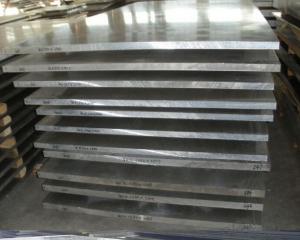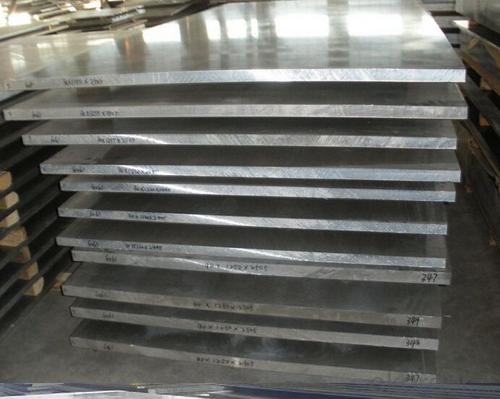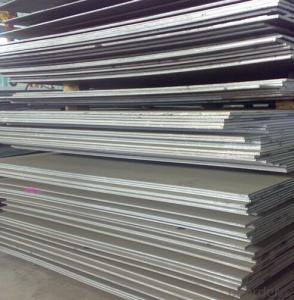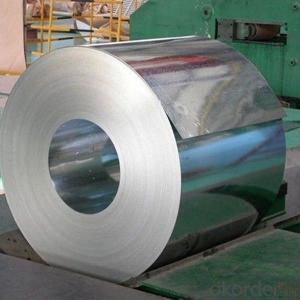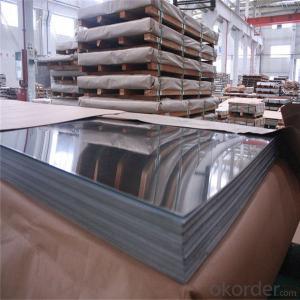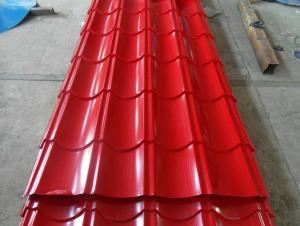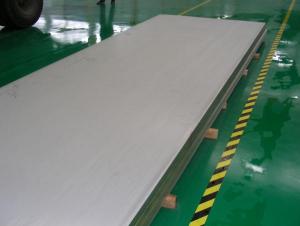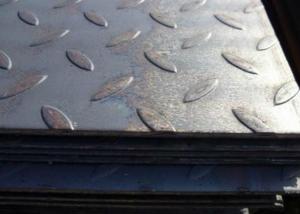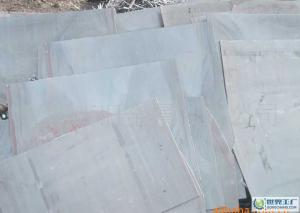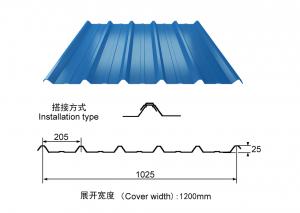MS Steel Sheet ASTM A36 Carbon Steel Plate
- Loading Port:
- Tianjin
- Payment Terms:
- TT OR LC
- Min Order Qty:
- 50 m.t.
- Supply Capability:
- 50000 m.t./month
OKorder Service Pledge
OKorder Financial Service
You Might Also Like
Specification
1.Description of steel plate:
Our products into high-strength low-alloy steel plate, carbon structural steel plate, alloy structural steel plate, boiler and pressure vessel steel plate, bridge steel plate, structural steel plate, shipbuilding steel plate and marine oil platform steel plate, pipe steel plate, high strength and high toughness steel plate, mold plate, corrosion-resistant plate, Wear-resistand steel plate, composite plate with 12 major series.
2.Size range: Steel Plate width 300-5000mm, thickness 5-600mm, length 1000-18000mm.
Usage: (1).used for metallurgical, mechanical, electrical construction field
(2).used for ships, military (armored) Construction
(3).used for outside engineering, machine tool base, automobile rear of products
3.Standard: According to user requirements, can be delivered the following criteria: National standards, the metallurgical industry, the American ASTM, ASME standards, Japanese JIS, German DIN, British BS, European EN, the international ISO standards and the standards specific board.
4.Inspection Standard: In accordance with China (JB4730, GB/T2970), United States (A435, A577, A588), Japan (JISG0801, JISG0901), Germany (SEL072), British (BS5996), France (NFS04-305) and other domestic and international testing standard production test.
5.Data of steel sheet:
Item name | Titanium plate | |
Standard | ASTM B265, ASTM F67, ASME | |
Grade | Gr1, Gr2, Gr3, Gr5, Gr7, Gr12 | |
Dimension | Hot rolled | Thk*W*L (4.1-60.0)*(400-3000)*(1000-7000)mm |
Cold rolled | Thk*W*L (0.3-4.0)*(400-1400)*(1000-4000)mm | |
Surface | Acid pickling | |
Application | Heat exchanger, chemical or medical industry | |
Advantages | High qualities, competitive price, strict inspection, prompt delivery. | |
6.Image of steel sheet:

7.FAQ
We have organized several common questions for our clients,may help you sincerely:
①How about your Warranty?
Warranty: 1-Year for the whole light. Warranty is based on correct storage, installation, using and maintenanc
②How to guarantee the quality of the products?
We have established the international advanced quality management system,every link from raw material to final product we have strict quality test;We resolutely put an end to unqualified products flowing into the market. At the same time, we will provide necessary follow-up service assurance.
③How long can we receive the product after purchase?
In the purchase of product within three working days, We will arrange the factory delivery as soon as possible. The pecific time of receiving is related to the state and position of customers.Commonly 7 to 10 working days can be served.
- Q: What is the process of perforating steel sheets?
- The process of perforating steel sheets involves creating holes or patterns in the metal by using specialized machinery or tools. This can be done through various methods such as punching, drilling, or laser cutting, depending on the desired shape and size of the perforations. The perforation process allows for increased ventilation, light transmission, or aesthetic design in steel sheets, making them suitable for various applications in industries such as construction, automotive, or manufacturing.
- Q: Can steel sheets be used for insulation purposes?
- No, steel sheets are not suitable for insulation purposes as they conduct heat and do not provide any thermal resistance.
- Q: Are the steel sheets suitable for outdoor signage?
- Indeed, outdoor signage can indeed be made from steel sheets. Steel is renowned for its robustness, endurance, and ability to resist various weather conditions. It is capable of enduring severe outdoor environments, such as extreme temperatures, rain, wind, and sunlight, without distorting or deteriorating. Modifying the thickness of the steel sheets can provide stability and durability to the signage, depending on its size and design. Furthermore, steel sheets can be effortlessly personalized and painted to align with the desired visual appeal, making them a favored option for outdoor signage ventures.
- Q: What is the difference between a perforated and woven steel sheet?
- A perforated steel sheet is a metal sheet that has holes or perforations evenly distributed across its surface. These holes can be of various shapes and sizes, such as round, square, or slotted. Perforated steel sheets are commonly used in applications where airflow, visibility, or drainage is required, such as in architectural design, filtration systems, and acoustic panels. The main advantage of perforated steel sheets is their ability to provide these functionalities while still maintaining structural integrity. On the other hand, a woven steel sheet is a metal sheet that is made by interlacing steel wires together in a specific pattern. This interlacing creates a mesh-like structure, where the wires form a series of intersecting horizontal and vertical lines. Woven steel sheets are commonly used in applications that require strength, durability, and security, such as in fencing, guarding, and industrial filtration systems. The main advantage of woven steel sheets is their ability to provide a high level of strength and security due to the tightly interwoven wires. In summary, the main difference between a perforated and woven steel sheet lies in their respective structures and functionalities. Perforated steel sheets have evenly distributed holes across their surface, providing benefits such as airflow and visibility. Woven steel sheets, on the other hand, are made by interlacing steel wires together to form a mesh-like structure, providing benefits such as strength and security. The choice between the two depends on the specific requirements of the application at hand.
- Q: What is the typical lead time for steel sheet orders?
- The typical lead time for steel sheet orders can vary depending on the supplier and the specific requirements of the order. Generally, it can range from a few days to several weeks.
- Q: What is the average thickness of galvanized steel sheets?
- The average thickness of galvanized steel sheets typically ranges from 0.8mm to 3mm, depending on the specific application and industry standards.
- Q: What is the weight of a typical steel sheet?
- The weight of a typical steel sheet can vary depending on its dimensions and thickness. However, on average, a standard steel sheet can weigh anywhere from 15 to 30 pounds per square foot.
- Q: Are there any restrictions on the thickness of the steel plate, such as the minimum thickness of the steel plate?
- The information of the building is incomplete and can not be determined. The welding technical parameters will affect the welding method, welding current, welding voltage, welding environment and specifications
- Q: Are steel sheets recyclable?
- Yes, steel sheets are recyclable. They can be melted down and reused to make new steel products.
- Q: What is the difference between coated and uncoated steel sheets?
- Coated and uncoated steel sheets differ primarily in terms of their protective layer and surface finish. Coated steel sheets, also known as galvanized steel sheets, are coated with a layer of zinc to prevent corrosion and increase durability. This zinc coating acts as a sacrificial layer, protecting the underlying steel from rust and other forms of damage. Additionally, coated steel sheets have a smoother and more polished appearance. On the other hand, uncoated steel sheets are not treated with any protective layer. This makes them more susceptible to corrosion, especially when exposed to moisture or chemicals. Uncoated steel sheets are often used in applications where corrosion resistance is not a significant concern, such as in construction projects where the steel will be covered or protected in some way. In terms of cost, coated steel sheets are generally more expensive than uncoated steel sheets due to the additional manufacturing process involved in applying the zinc coating. However, the added cost is justified by the enhanced durability and extended lifespan of coated steel sheets. In summary, the main difference between coated and uncoated steel sheets lies in the presence of a protective layer. Coated steel sheets offer superior corrosion resistance and have a smoother appearance, while uncoated steel sheets are more vulnerable to corrosion and have a rougher surface finish.
Send your message to us
MS Steel Sheet ASTM A36 Carbon Steel Plate
- Loading Port:
- Tianjin
- Payment Terms:
- TT OR LC
- Min Order Qty:
- 50 m.t.
- Supply Capability:
- 50000 m.t./month
OKorder Service Pledge
OKorder Financial Service
Similar products
Hot products
Hot Searches
Related keywords
